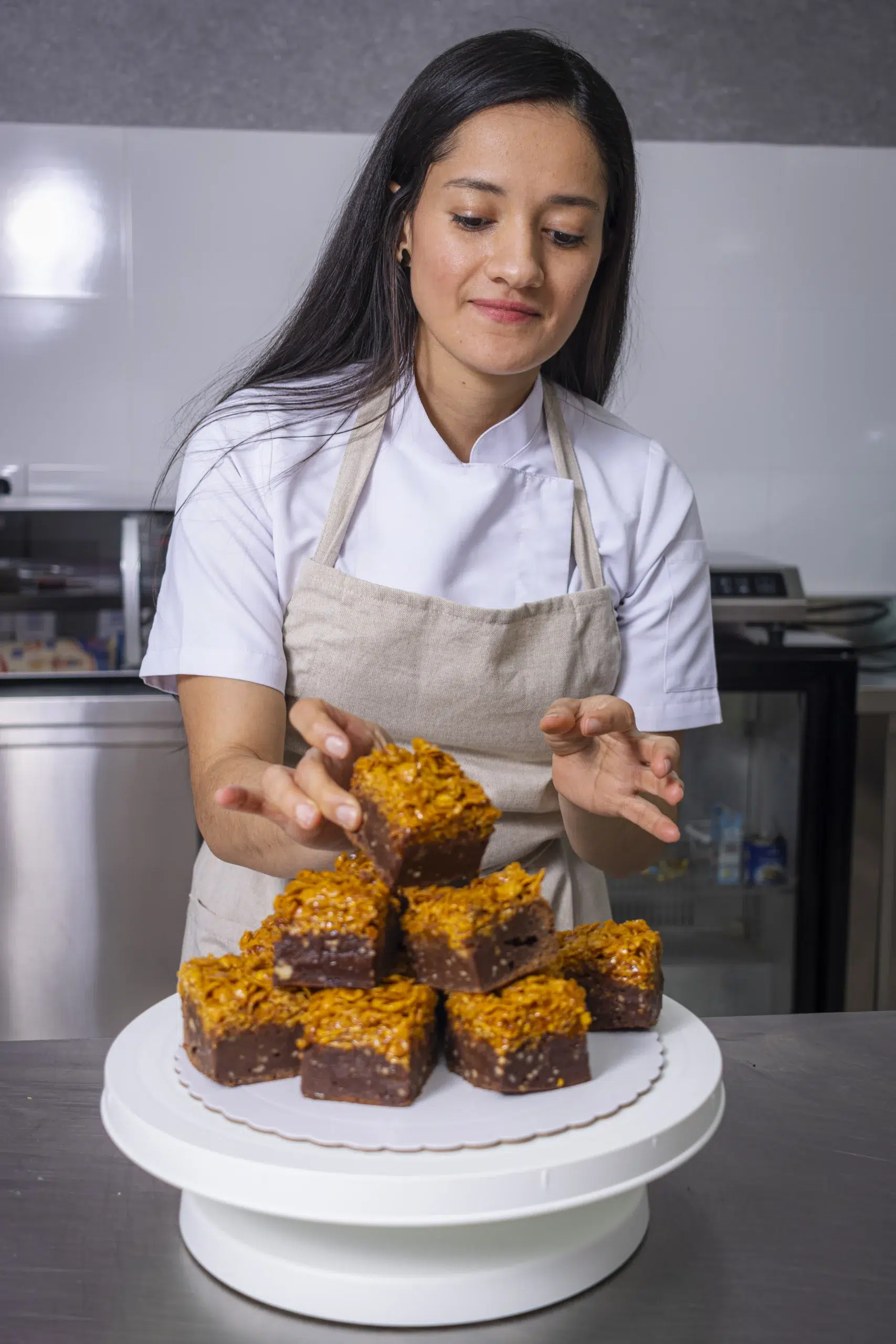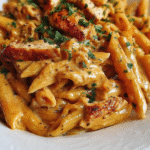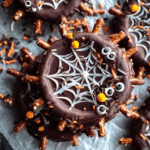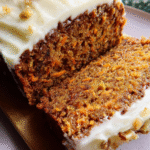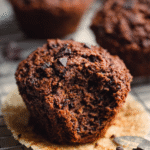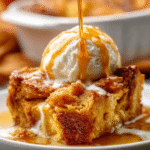Introduction
The debate over the ideal cooking temperature for meatloaf-making heats up with most recipes recommending 350°F or 375°F. Which temperature yields the best results? Let’s explore the nuances of cooking meatloaf at these temperatures to uncover each method’s secrets.
- 350°F (177°C): This temperature is perfect for those who prefer their meatloaf moist and juicy. It allows a slower, more even cooking process, where the fat renders slowly and infuses the loaf with flavor while keeping it from drying out.
- 375°F (191°C): If you like a firmer, denser meatloaf with a crispy outer crust, this might be your ideal temperature. It’s great for caramelizing any glaze while keeping the inside tender but compact.
Choosing between 350°F and 375°F depends on your texture preferences and the specific ingredients in your recipe. Each temperature can dramatically affect the meatloaf’s flavor and texture, making it crucial to select the right one for your taste and the desired outcome.

Understanding the Importance of Temperature
Before we dive into the differences between cooking at 350°F and 375°F, it’s essential to grasp how crucial temperature is in preparing meatloaf. The temperature you choose to cook your meatloaf at will significantly affect its texture, juiciness, and overall flavor. Additionally, it impacts the cooking time, which can alter the convenience of your meal preparation.
Cooking meatloaf at the right temperature ensures that each slice is perfectly tender and packed with flavor. It’s not just about following a recipe; it’s about understanding how heat interacts with the ingredients to bring out the best in your dish. Choosing the correct temperature can mean the difference between a dry, crumbly loaf and a moist, succulent masterpiece.
The Science Behind Cooking Meatloaf
Meatloaf combines ground meat, binders, and flavorings into a delicious dish. When you cook meatloaf, the proteins in the meat denature and coagulate, forming a solid structure. Cooking at higher temperatures speeds up this process, resulting in quicker cooking times but potentially yielding a drier meatloaf. On the other hand, lower temperatures promote a gentler cooking process, helping to retain more moisture, although it takes longer to cook.
Understanding these scientific principles can greatly improve your cooking. By knowing how temperatures affect protein coagulation, you can better manage the texture and juiciness of your meatloaf. Whether you prefer it moist and tender or firm and dense, adjusting your cooking temperature can help you achieve the perfect result every time.
Exploring 350°F Cooking
Cooking meatloaf at 350°F is a classic method many home cooks swear by. At this temperature, the meat cooks slowly and evenly, ensuring that each bite is tender and moist. The lower heat helps the flavors to meld together beautifully, creating a well-rounded and satisfying dish.
This temperature setting is ideal for those who appreciate a meatloaf that’s juicy and flavorful. It allows the ingredients to cook at a pace that maximizes flavor development without drying out the meat. Opting for 350°F can make a significant difference in the texture and taste of your meatloaf, making it a favorite choice for a comforting, hearty meal.
The Case for 375°F Cooking
On the other hand, cooking meatloaf at 375°F comes with its own unique benefits. This higher temperature accelerates browning, caramelization, and crust formation, significantly enhancing both the flavor and appearance of the meatloaf. Moreover, the reduced cooking time is an attractive feature for those with busy schedules.
This cooking method is perfect for those who prefer a meatloaf with a bit more texture and a robust, caramelized flavor. It’s all about achieving that perfect golden crust that adds a satisfying crunch and rich taste to every slice. Choosing 375°F can turn an ordinary meatloaf into a delectable weeknight dinner favorite, all while fitting comfortably into a hectic lifestyle.
Pros and Cons of Each Temperature
To help you make an informed decision, let’s consider the advantages and disadvantages of cooking meatloaf at 350°F versus 375°F. Reflect on factors like texture, flavor, cooking time, and personal preference to determine which temperature best meets your culinary needs.
350°F Pros:
- Moisture Preservation: Cooking at this lower temperature ensures that the meatloaf remains moist and juicy.
- Flavor Development: Slow cooking allows flavors to meld significantly, enhancing the overall taste.
- Texture: Generally yields a tender meatloaf that easily breaks apart with a fork.
350°F Cons:
- Longer Cooking Time: Might not be the best choice for those in a hurry.
- Less Browning: There is minimal surface browning, which can affect the final appearance and flavor profile.
375°F Pros:
- Quick Cooking: Ideal for busy cooks, as it reduces overall kitchen time.
- Enhanced Browning and Caramelization: Offers a superior crust with a rich, caramelized flavor.
- Visual Appeal: Produces a more appealing golden-brown crust.
375°F Cons:
- Risk of Dryness: There’s a higher chance of drying out the meat, especially if overcooked.
- Texture Might Be Too Firm: Some may find the denser texture less desirable.
By evaluating these points, you can choose the temperature that aligns best with your preferences for texture, flavor, and cooking convenience.
Perfecting Your Meatloaf: Finding the Ideal Temperature
Tips for Cooking Meatloaf
Regardless of the temperature you choose, employing certain techniques can significantly elevate your meatloaf experience. Whether you opt for 350°F or 375°F, these tips will help you achieve a delicious and satisfying result every time.
- Select the Right Meat Blend: Opt for a mix of meats for the best flavor and texture. A popular choice is a combination of beef, pork, and veal, known as a “meatloaf mix.” Each type of meat contributes its own unique flavor and fat content, which can enhance the juiciness and taste of your meatloaf.
- Season Generously: Don’t skimp on the seasoning. Salt, pepper, herbs, and spices are crucial for flavoring the meatloaf throughout. Consider using garlic powder, onion powder, smoked paprika, and a blend of Italian herbs for a rich and aromatic flavor.
- Mix Completely but Gently Overmixing can make the meatloaf tough. Mix the constituents until just combined for the stylish texture.
- Shape Properly: Shape your meatloaf consistently to ensure even cooking. Avoid making it too thick or too thin, aiming for a uniform shape that will cook evenly throughout.
- Use a Thermometer: To avoid undercooked or overcooked meatloaf, always use a meat thermometer to check the internal temperature. The ideal internal temperature for meatloaf is 160°F, which ensures it is cooked safely and remains moist.
- Let it Rest: Allow your meatloaf to rest for about 10 minutes after cooking. This rest period lets the juices redistribute throughout the meatloaf, making it easier to slice and more flavorful.
By following these tips, you can tailor your cooking technique to suit any temperature setting and ensure that your meatloaf is always moist, flavorful, and perfectly cooked.
Experimentation and Adjustments
Cooking is as much about experimentation as it is about following recipes. Don’t be afraid to tweak cooking temperatures and times to better suit your taste preferences. Keep notes on your adjustments to refine your meatloaf recipe over time.
- Adjust Cooking Temperatures: Feel free to experiment with slightly higher or lower temperatures than suggested. You might find that a small adjustment in temperature could lead to a big improvement in texture or juiciness.
- Modify Cooking Times: Along with temperature changes, modifying cooking times can also impact the outcome. If you prefer a crustier exterior, consider extending the cooking time slightly at a higher temperature. Conversely, a shorter time might prevent drying out if your meatloaf tends to be too dry.
- Document Your Changes: Keeping a cooking diary can be incredibly helpful. Record what worked and what didn’t, noting how each tweak affected the final dish. This record will guide your future cooking attempts and help you perfect your recipe.
By embracing adjustments and documenting your cooking experiments, you can tailor your meatloaf precisely to your liking and continually improve your culinary skills.
FAQs: Cooking Meatloaf at Different Temperatures
What’s the Difference Between Cooking Meatloaf at 350°F and 375°F?
Cooking at 350°F generally results in a moister, more tender meatloaf due to the slower, even cooking process. On the other hand, 375°F tends to create a firmer, denser texture with a nicely browned crust, thanks to the higher temperature accelerating the browning and caramelization processes.
How Does Cooking Temperature Affect Meatloaf Texture?
The cooking temperature can dramatically alter the texture of meatloaf. Lower temperatures (350°F) produce a softer, juicier meatloaf, while higher temperatures (375°F) yield a tougher, more compact loaf with a crisper exterior, ideal for those who enjoy a bit of crunch.
Can I Combine Both Temperatures for Cooking Meatloaf?
Yes, combining temperatures can be an effective way to capitalize on the benefits of both. Start at 375°F to develop a crisp crust and then lower to 350°F to finish cooking gently. This method helps maintain moisture while achieving a desirable outer texture.
Should I Adjust Cooking Times Based on Temperature?
Absolutely! Higher temperatures require shorter cooking times to prevent drying out the meatloaf. Conversely, lower temperatures need longer durations to ensure thorough cooking. Always use a meat thermometer to check for an internal temperature of 160°F to confirm doneness.
Which Temperature is Best for Crispy Bacon-Wrapped Meatloaf?
For crispy bacon-wrapped meatloaf, 375°F is the optimal temperature. The higher heat crisps the bacon effectively while still cooking the meatloaf to perfection inside. This temperature helps to achieve a flavorful, crunchy bacon exterior without overcooking the meat inside.
Comprehensive Guide to Meatloaf Cooking Temperatures
Exploring the ideal meatloaf temperature comparison reveals a debate among enthusiasts whether 350°F or 375°F is superior. This guide delves into the meatloaf cooking science, providing insights on how each temperature can affect your dish’s texture, flavor, and overall success.
Understanding the Importance of Temperature
Temperature plays a critical role in the culinary process, affecting everything from texture to juiciness. Choosing the right meatloaf cooking temperature can significantly influence meal preparation ease and enjoyment.
The Science Behind Cooking Meatloaf
Understanding the protein transformations that occur during cooking can inform decisions on the best temperature for meatloaf cooking. Each temperature setting offers unique benefits, impacting the meat’s texture and moisture levels.
Exploring 350°F Cooking
Cooking at 350°F is often favored for its gentle cooking approach, which enhances moisture retention and flavor blending—key aspects for a tender, juicy meatloaf.
The Case for 375°F Cooking
Alternatively, 375°F is recommended for creating a delectable crust through faster browning and caramelization, appealing to those who favor a crispier texture.
Pros and Cons of Each Temperature
Weighing the meatloaf temperature pros and cons is crucial for personalizing your cooking approach. Factors like cooking duration, desired texture, and moisture retention play significant roles in this decision.
Perfecting Your Meatloaf: Finding the Ideal Temperature
Adopting various meatloaf cooking tips can elevate your dish regardless of the chosen temperature. Proper meat selection, seasoning, and handling are vital for achieving culinary excellence.
Experimentation and Adjustments
Cooking meatloaf variations encourages culinary creativity and can lead to perfecting your personal recipe. Adjustments in temperature and cooking times are tools for customizing texture and flavor.
Comprehensive Guide to Meatloaf Cooking Temperatures
Exploring the ideal meatloaf temperature comparison reveals a debate among enthusiasts whether 350°F or 375°F is superior. This guide delves into the meatloaf cooking science, providing insights on how each temperature can affect your dish’s texture, flavor, and overall success.
Understanding the Importance of Temperature
Temperature plays a critical role in the culinary process, affecting everything from texture to juiciness. Choosing the right meatloaf cooking temperature can significantly influence meal preparation ease and enjoyment.
The Science Behind Cooking Meatloaf
Understanding the protein transformations that occur during cooking can inform decisions on the best temperature for meatloaf cooking. Each temperature setting offers unique benefits, impacting the meat’s texture and moisture levels.
Exploring 350°F Cooking
Cooking at 350°F is often favored for its gentle cooking approach, which enhances moisture retention and flavor blending—key aspects for a tender, juicy meatloaf.
The Case for 375°F Cooking
Alternatively, 375°F is recommended for creating a delectable crust through faster browning and caramelization, appealing to those who favor a crispier texture. Discover similar techniques in the Food Network: Classic Meatloaf Recipe.
Pros and Cons of Each Temperature
Weighing the meatloaf temperature pros and cons is crucial for personalizing your cooking approach. Factors like cooking duration, desired texture, and moisture retention play significant roles in this decision.
Perfecting Your Meatloaf: Finding the Ideal Temperature
Adopting various meatloaf cooking tips can elevate your dish regardless of the chosen temperature. Proper meat selection, seasoning, and handling are vital for achieving culinary excellence.
Experimentation and Adjustments
Cooking meatloaf variations encourages culinary creativity and can lead to perfecting your personal recipe. Adjustments in temperature and cooking times are tools for customizing texture and flavor.
Explore how different cooking times and temperatures can affect your dishes with insights from our detailed guide on meatloaf cooking times.
Comprehensive Guide to Meatloaf Cooking Temperatures
Introduction
Exploring the ideal meatloaf temperature comparison reveals a debate among enthusiasts whether 350°F or 375°F is superior. This guide delves into the meatloaf cooking science, providing insights on how each temperature can affect your dish’s texture, flavor, and overall success.
Understanding the Importance of Temperature
Temperature plays a critical role in the culinary process, affecting everything from texture to juiciness. Choosing the right meatloaf cooking temperature can significantly influence meal preparation ease and enjoyment.
The Science Behind Cooking Meatloaf
Understanding the protein transformations that occur during cooking can inform decisions on the best temperature for meatloaf cooking. Each temperature setting offers unique benefits, impacting the meat’s texture and moisture levels.
Exploring 350°F Cooking
Cooking at 350°F is often favored for its gentle cooking approach, which enhances moisture retention and flavor blending—key aspects for a tender, juicy meatloaf.
The Case for 375°F Cooking
Alternatively, 375°F is recommended for creating a delectable crust through faster browning and caramelization, appealing to those who favor a crispier texture.
Pros and Cons of Each Temperature
Weighing the meatloaf temperature pros and cons is crucial for personalizing your cooking approach. Factors like cooking duration, desired texture, and moisture retention play significant roles in this decision.
Perfecting Your Meatloaf: Finding the Ideal Temperature
Adopting various meatloaf cooking tips can elevate your dish regardless of the chosen temperature. Proper meat selection, seasoning, and handling are vital for achieving culinary excellence.
Experimentation and Adjustments
Cooking meatloaf variations encourages culinary creativity and can lead to perfecting your personal recipe. Adjustments in temperature and cooking times are tools for customizing texture and flavor.
FAQs: Cooking Meatloaf at Different Temperatures
Addressing common questions helps clarify the differences and benefits of cooking at 350°F versus 375°F, how these temperatures influence texture, and the best practices for using them effectively.
By integrating these insights and techniques, you can master the art of meatloaf cooking, making every meal a testament to your skills and preferences.
Explore how different cooking times and temperatures can affect your dishes with insights from our detailed guide on meatloaf cooking times.
By integrating these insights and techniques, you can master the art of meatloaf cooking, making every meal a testament to your skills and preferences.


